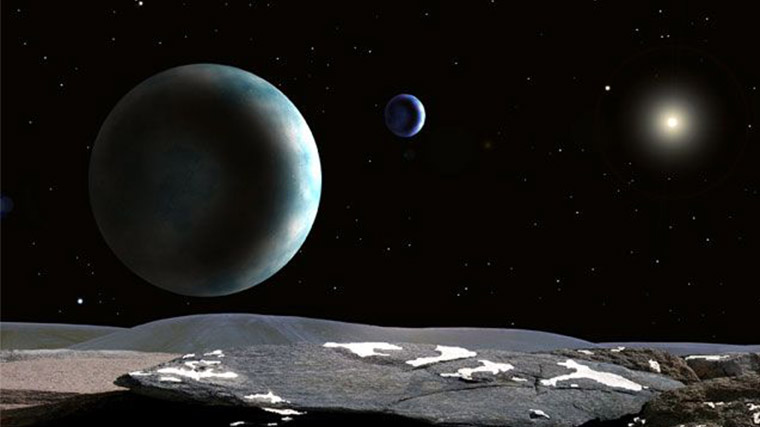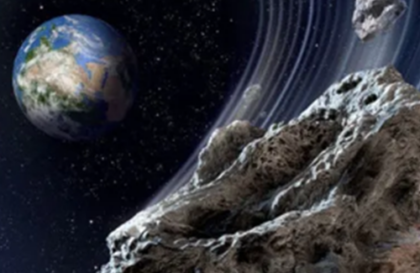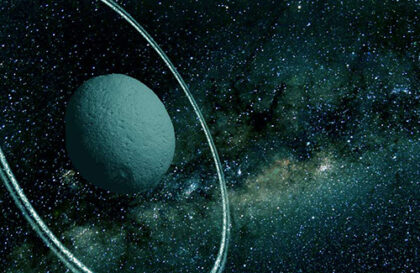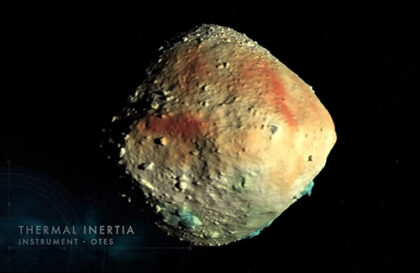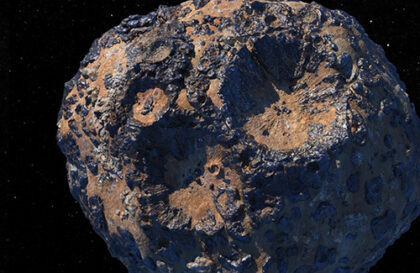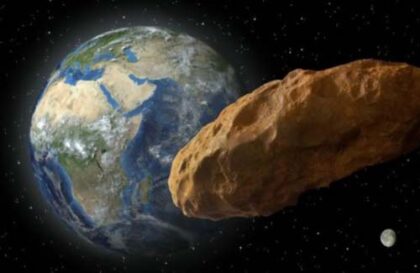Over the last century, we’ve gotten used to having nine planets in our solar system: Mercury, Venus, Earth, Mars, Jupiter, Saturn, Uranus, Neptune, and Pluto.
In 2006, the organization responsible for classifying celestial bodies, the International Astronomical Union IAU, decided that a new class of objects was needed. The ninth planet in the solar system, Pluto, was placed in a new category of “dwarf planets” along with four other bodies.
The IAU proposed a new definition of “planet”: a body that orbits the Sun without being a companion of any other object, is large enough to be rounded by its own gravity (but not so large that it begins to experience nuclear fusion like a star), and has “cleared the neighborhood” of most other bodies in orbit.
The IAU officially recognizes only five dwarf planets at this time. Here’s a brief overview of all five: Pluto, Eris, Haumea, Makemake, and Ceres.
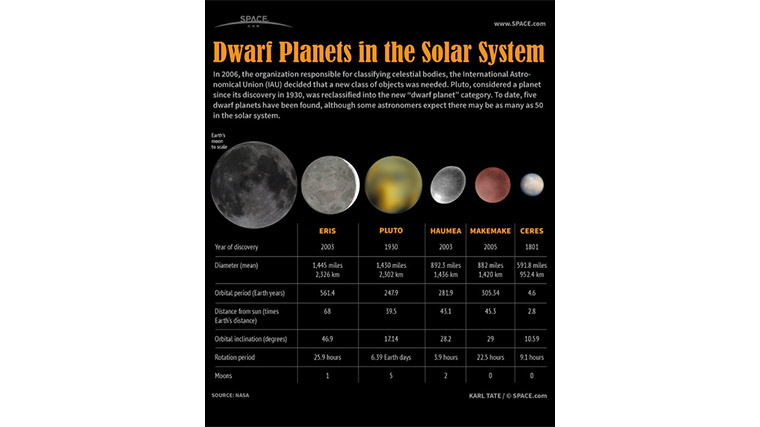
Erida: the troublemaker
ERIDA is the 10th real planet in the solar system, which became a kind of Trojan gift for the traditional techniques of 20th-century astrology.
The discovery prompted the IAU to strip Pluto of its planetary status and create the category of “dwarf planets” a year later.
When discovered?
Eris was discovered by American astronomer Mike Brown and his colleagues in January 2005 using the 122-centimeter Samuel Oschin Telescope with 112 CCDs at the Palomar Observatory. It was initially given the temporary name “2003 UB313”. Later, at the suggestion of Mike Brown, the planet was named Eris, after the ancient Greek goddess of strife and struggle.
What do we know about Eris?
Eris is the largest dwarf object in the solar system. Its diameter is about 1,445 miles (2,326 km), making it slightly larger than Pluto. This is about 27% of the diameter of Earth.
Eris is at a very great distance from the Sun at an average distance of about 96 astronomical units, making it one of the most distant objects in the solar system.
rid rotates at an average distance of 68 a.u. (that is, 68 times Earth’s distance from the Sun), and it takes 561.4 Earth years to complete a revolution around the Sun. But the orbit is highly elongated, At perihelion it appears closer to the Sun than Pluto at aphelion, only, unlike him, Erida does not fall inside the orbit of Neptune.
It passed aphelion in March-April 1977 and is still approaching the Sun. As of 2022, Erid is 95.83 a. e. (14.3 billion kilometers) from the Sun, meaning sunlight takes about 13 hours to reach it. This places it third on the list of the most distant solar system bodies known to science, behind the recently discovered 2020 FA31 (97.4 a. e.) and 2020 FY30 (98.9 a. e.)
Erida’s orbit is most strongly inclined, almost 47 degrees from the plane of the planets’ orbits. A day on Erida lasts 25.9 hours. Erida has one famous satellite, which has been temporarily named the Disney Satellite. The satellite’s official name, Disney (Disney), was given in honor of a character from Hans Christian Andersen’s cartoon The Snow Queen.
Eris has a thin atmosphere composed mostly of methane. This leads to the formation of atmospheric phenomena such as clouds and methane ice on the surface.
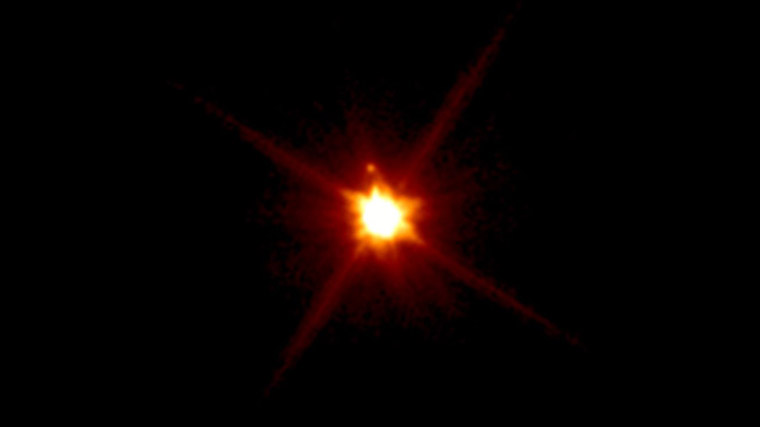
Pluto. An outcast from the class of planets
When Discovered?
Pluto, discovered in 1930, orbits the Sun an average of 39.5 times farther away than Earth.
What do we know about Pluto?
Its diameter is 1,430 miles (2,302 kilometers). Pluto orbits the Sun in 247.9 Earth years, and its day is 6.39 times longer than Earth’s. Pluto has five known satellites: Charon, Nix, Hydra, and two that were recently discovered and have yet to be named.
Pluto was discovered by American Clyde Tombaugh in 1930. Its diameter is about 1,455 miles (2,352 kilometers) – less than 20 percent of the size of our planet. And Pluto is only 0.2 percent heavier than Earth.
Pluto has an extremely elliptical orbit, which is not in the same plane as the orbits of the eight official planets. On average, the dwarf planet circles the Sun at a distance of 3.65 billion miles (5.87 billion kilometers), making one revolution in 248 years.
Its surface temperature fluctuates around minus 375 degrees Fahrenheit (minus 225 degrees Celsius).
Pluto has four known satellites: Charon, Nix, Hydra, and the recently discovered tiny satellite P4. While Nix, Hydra, and P4 are relatively small, Charon is about half the size of Pluto. Because of Charon’s size, some astronomers view Pluto and Charon as a double dwarf planet or binary system.
Haumea: the weirdo
When discovered?
José Luis Ortiz of the Astrophysical Institute of Andalusia and his student Pablo Santos-Sanz discovered Jaumea on July 25, 2005, in an image taken by Francisco Aceituno on March 7, 2003, through the 36-centimeter telescope at the Sierra Nevada Observatory and announced their discovery on July 29, 2005, becoming the official discoverer.
But Haumea had been discovered a year earlier by American astronomer Mike Brown and his team. It was named after the Hawaiian goddess of nativity and fertility, reflecting the local culture of Hawaii. Brown delayed announcing the discovery due to the birth of his daughter.
What do we know about Haumea?
Haumea is a fascinating site because of its unusual shape. It is stretched along the equator and is shaped like an egg or a spinning pancake. Its longest dimension is about 1,218 miles (1,960 kilometers). This unusual shape may be the result of the planet’s rapid rotation. Indeed, Haumea rotates very fast and has the shortest day of any dwarf planet, only 3.9 hours. It is the fastest-rotating body of all Solar System objects studied, with a diameter of more than 100 kilometers. Being 43.1 times farther from the Sun than Earth, Haumea makes one revolution in 282 Earth years.
Haumea has two known satellites, Namike and Hiiaka. These satellites were named after Haumea’s daughters from Hawaiian mythology.
Haumea is located in the Kuiper Belt, which is populated by many objects like asteroids and comets.
Haumea, like many other dwarf planets and Kuiper Belt objects, is probably composed mostly of a mixture of ice and rocky materials. Its surface may be covered with methane and other ices.
Makemake’s Mystery Makeover
When discovered?
Makemake was discovered in 2005 using the Hubble Space Telescope by astronomers from the University of Bonn in Germany. It got its name from the creator and hunter god in Polynesian mythology.
Brown’s team also discovered Makemake in 2005. Astronomers are not sure of Makemake’s exact size, but the dwarf planet is thought to be about three-quarters the size of Pluto. Therefore, it is probably the third largest dwarf planet after Eridas and Pluto.
What do we know about Makemake?
Makemake orbits at an average distance of 4.26 billion miles (6.85 billion km), 45.3 times the distance from Earth to the Sun, slightly farther away than Pluto, and takes 306 years to complete a full revolution around the Sun. Its day is 22.5 hours long. Periodically it may be closer to the Sun than Pluto, but it does not enter the orbit of Neptune.
Makemake has a diameter of approximately 882 miles (1,420 km), making it one of the largest dwarf planets in the Kuiper belt. Its surface reflects sunlight and it has a high albedo (ability to reflect light), making it quite bright. Makemake has a reddish surface color. This may be due to chemical processes on its surface, including the possible formation of organic compounds.
Despite its remoteness and small size, Makemake may have a thin atmosphere. This was revealed through observations that showed a change in the planet’s brightness as it passed in front of stars.
In 2016, astronomers announced the discovery of Makemake’s companion, which was temporarily named the Makemake Satellite. The satellite’s official name, MKE20, was assigned later. This means that Makemake has one known satellite. The mass of Makemake has not yet been accurately determined.
According to the IAU, Makemake is the second brightest Kuiper Belt object after Pluto and can be seen in a high-quality amateur telescope.
In 2187, its apparent stellar magnitude will reach 15.5m, only slightly less than the brightness of Pluto, with which it will be almost at the same distance from the Sun.
Ceres: queen of the asteroid belt
Ceres is one of the most interesting objects in the asteroid belt between the orbits of Mars and Jupiter (the previous dwarf planets are in the Kuiper belt). At the beginning of its discovery it was considered as a planet, then as an asteroid, and now it is classified as a dwarf planet.
When discovered?
Ceres was discovered in 1801 by Italian astronomer Giuseppe Piazzi.
What do we know about Ceres?
Ceres is one of the largest objects in the asteroid belt. It has a diameter of about 590 miles (950 kilometers). It is the smallest known dwarf planet. It has a more or less spherical shape, which makes it rather unique among asteroids. Its year lasts 4.6 Earth years, and a day lasts 9.1 hours.
Ceres’ surface has bright areas and dark spots, as well as a large crater known as Ocator, within which is a mysterious bright spot called the “Valley of Brightness”.
Ceres has a very thin atmosphere composed mostly of water vapor. This atmosphere is very rarefied and is incomparable to the atmospheres of the planets.
Ceres has one companion, Discovery, which was discovered in 2005. Interestingly, the Discovery satellite moves synchronously with Ceres’ orbit, always with one side facing it.
One of the most significant research missions related to Ceres was NASA’s Dawn mission. Departing in 2007, the Dawn spacecraft reached Ceres in 2015 and conducted a detailed study of its surface and characteristics.
Ceres could have become a full-fledged solid planet like Earth or Mars if Jupiter hadn’t shaken up the asteroid belt long ago.
However, some astronomers suggest there could be as many as 50 dwarf planets in the solar system. Looking for one?
Image credit:
https://www.space.com
https://www.space.com
https://formula.careers
https://ru.wikipedia.org
